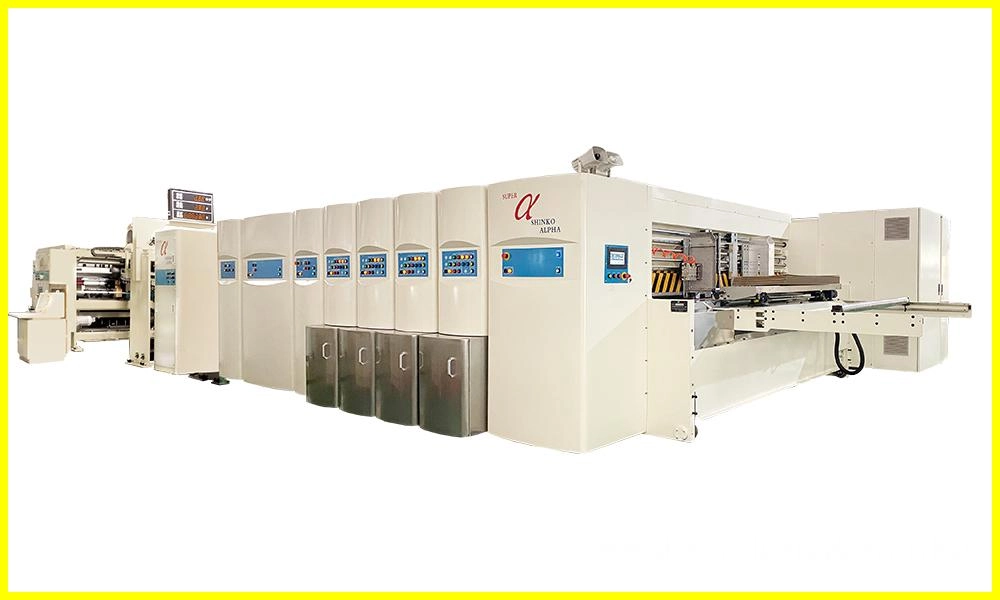How do you choose the correct printing plate for a flexographic machine? | Keshenglong&Shinko Guide
Discover expert guidance for choosing the right flexographic printing plate. Improve print quality, reduce waste, and optimize production with Keshenglong&Shinko.
- How do you choose the correct printing plate for a flexographic machine?
- Understand Plate Types and Materials
- Match Plate Hardness to Substrate
- Consider Print Image Detail and Line Screen
- Factor in Ink Type and Compatibility
- Evaluate Plate Thickness and Backing
- Consider Production Run Length and Cost Efficiency
- Consult Technical Support and Plate Suppliers
- References:
How do you choose the correct printing plate for a flexographic machine?
Selecting the correct printing plate for a flexographic machine is crucial for achieving high-quality prints, efficient production, and reduced waste. Flexo professionals often face challenges in balancing plate durability, ink compatibility, and image detail. This guide provides clear criteria to optimize plate selection.
Understand Plate Types and Materials
- Photopolymer Plates: Most common in modern flexography, offering high resolution; suitable for short and long runs.
- Rubber Plates: Less prevalent now, but still used for simple designs or basic printing.
- Elastomer Plates: Durable, ideal for abrasive substrates and long production runs.
Authoritative Source: *Flexographic Technical Association (FTA)* recommends photopolymer plates for most high-quality commercial applications.
Match Plate Hardness to Substrate
- Soft Plates (Hardness Shore A 35–45): Ideal for rough or textured substrates (e.g., corrugated board).
- Medium Plates (Hardness Shore A 45–55): Suitable for coated or smooth paper, label stock.
- Hard Plates (Hardness Shore A 55–65): Best for film, foil, or other very smooth surfaces.
Consider Print Image Detail and Line Screen
- Fine Detail: Use higher line screen photopolymer plates (100–200 LPI) for intricate graphics or small text.
- Large Solid Areas: Lower line screen or thicker plates prevent pinholing, ensuring solid ink laydown.
- Expert Tip: Fine detail plates often require precise control of impression settings—refer to your press manufacturer’s recommendations.
Factor in Ink Type and Compatibility
- Solvent-based Inks: Choose plates resistant to swelling and wear.
- Water-based Inks: Select plates with optimized surface tension properties for clean ink transfer.
- UV-curable Inks: Use UV-compatible plates to prevent chemical degradation.
Data Point: *According to Smithers’ industry report, 55% of converters now prioritize ink compatibility when investing in new plate materials.*
Evaluate Plate Thickness and Backing
- Standard Thickness (1.14 mm, 1.7 mm, 2.84 mm): Matches industry norms for ease of mounting and consistent print impression.
- Custom Thickness: Custom jobs may require tailored backing for emboss or specialty effects.
Consider Production Run Length and Cost Efficiency
- Short Runs: Digital photopolymer plates offer fast turnaround and cost-effectiveness.
- Long Runs: Elastomer and high-durometer plates reduce wear and rebuild costs.
Consult Technical Support and Plate Suppliers
- Supplier Guidance: Work closely with plate manufacturers or suppliers for recommendations based on your specific press and job requirements.
- Plate Test Data: Request sample runs and comparative data for your applications.
Summary Checklist: Key Considerations for Flexographic Plate Selection
- Match plate type to substrate and expected print run length
- Align plate hardness with substrate texture
- Choose the correct line screen for desired print resolution
- Ensure compatibility with planned ink system
- Factor in cost, availability, and technical support
References:
- Flexographic Technical Association (FTA): (https://www.flexography.org)
- Smithers Flexo Industry Reports & Market Data
For further information or technical support, contact Keshenglong&Shinko’s flexo printing experts. Optimize your printing process with informed plate selection.
Recommended for you

Top Chinese Flexo Printing Machine Manufacturers 2026 — Full Buyer Guide

Flexo Printing vs. Offset Printing: The Superior Choice for Corrugated Box Production

Top Features of a Servo-Driven Flexo Printing Machine for High-Speed Corrugated Printing

How to Choose the Right Flexo Folder Gluer for Your Carton Factory

Top 10 Corrugated Box Printing Machines and Their Applications in 2025
Product
Are there safety features integrated into your machines?
Yes, our machines come equipped with multiple safety features including emergency stop buttons and safety guards.
What should I do if the machine jams during operation?
In case of a jam, immediately stop the machine, remove any obstructions, and check for any damage before restarting.
Industry Solutions
How can your machines improve my production workflow?
By automating carton production, our machines streamline your workflow, increase output, and reduce downtime.
Shipping
Can you ship to remote or difficult-to-access locations?
Yes, we can arrange shipping to remote locations, though additional charges and time may apply.
What are the shipping dimensions and weight of your folding carton machines?
Shipping dimensions and weight vary by model; please refer to the specific product details for accurate information.
Leave a message
Have any questions or queries about our products? Please leave us a message here and our team will get back to you promptly.
* Rest assured that your privacy is important to us, and all information provided will be handled with the utmost confidentiality.




© 2025 Keshenglong & SHINKO All Rights Reserved.


Keshenglong Carton Packing Machine
Keshenglong Carton Packing Machine
Keshenglong Carton Packing Machine
Keshenglong Carton Packing Machine
Keshenglong Carton Packing Machine